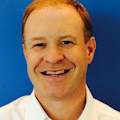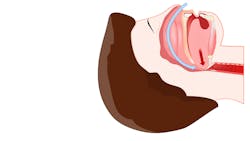Sleep apnea dentistry: What you need to know
Sleep apnea dentistry is rapidly growing. As many dentists become comfortable treating patients with oral appliances for obstructive sleep apnea (OSA), there is a lot to consider.
Financial considerations
It is estimated there are millions of patients with untreated obstructive sleep apnea (OSA). In fact, many patients with OSA are likely walking into our offices each day. Oral appliance therapy (OAT) is an untapped source of production in many dental offices and will also give patients some of the greatest benefits we can provide for them. Screening questionnaires, such as an Epworth or STOP-BANG, are great tools that can start a conversation with patients.
CPAP compliance
A CPAP, when worn, is the gold standard of care for patients with OSA. However, data shows that CPAP compliance rates can be low. The definition of compliance is using it for four hours a night, 70% of nights. In other words, a person must wear a CPAP half the night for five nights out of seven to satisfy the definition of CPAP-compliant. Imagine a patient taking half of their prescribed heart med, five nights a week. It’s hard to believe that someone’s cardiologist would consider that compliant. This is where an oral appliance called a mandibular advancement device (MAD) is useful. Ideally indicated for mild to moderate OSA, users of a MAD have shown to be quite compliant, with rates higher than 90%.
Sleep test
The gold standard of sleep tests is an in-lab polysomnogram (PSG). It is ideally performed under the direct supervision of a sleep center staff. All facets of sleep are measured (brain activity, blood oxygen level, chest movement/breathing, heart rate, eye and leg movement, among others). However, a growing field of sleep testing involves devices that can be worn at home. Advancements in technology have made home tests considerably more reliable and accurate. In fact, many board-certified sleep physicians are increasingly using home sleep studies for certain patients. Often, a home sleep study is given to someone to determine if titration, fit, and final outcome of a MAD has been successful.
Related articles
Dental sleep therapy: It's a math problem
Billing for sleep apnea
OSA diagnosis
According to many state dental boards, a licensed physician must order the sleep study. Also, the diagnosis of OSA must be made by a physician. Lastly, the physician must approve, or prescribe, a MAD. Having a close relationship with sleep physicians is integral to success in sleep dentistry.
Device design
There are countless MAD appliances from which a practitioner can choose. There are four basic types of appliances: midline traction (i.e., TAP), bilateral compression (i.e., Herbst), bilateral traction (i.e., EMA), and bilateral interlocking (i.e., dorsal fin). The “correct” choice centers around multiple considerations: patient comfort, patient dexterity to insert/remove device, dentition present, patient allergies, range of motion, and more. It is definitely not a one-size-fits-all decision for the practitioner. One should likely consider an appliance that is FDA-approved for the treatment of OSA.
Case study of an airline pilot
An airline pilot felt sluggish and sleepy in the mornings. He knew something was wrong and sought treatment from a sleep physician. He was diagnosed with mild OSA, and the FAA required the pilot to prove that he was under active care for his apnea. Given two choices, CPAP or MAD, he chose an oral appliance. His biggest consideration was his traveling; he did not want to carry a bulky CPAP around while working.
A MAD with a compliance monitoring chip was fabricated. The device shows that he is wearing it. There are multiple advantages: his OSA has been reduced, he feels better, the passengers on his plane are possibly safer, he is happy to have such a small device, and the dental office he visited generated extra revenue. This is an example of a true win-win for everyone.
Editor's note: This article appeared in the November 2022 print edition of Dental Economics magazine. Dentists in North America are eligible for a complimentary print subscription. Sign up here.
About the Author

Bryan Osterday, DDS, D.ABDSM
Bryan Osterday, DDS, D.ABDSM, is a graduate of the Ohio State University College of Dentistry. After a hand injury, he consulted in the Professional Oral Health division of Crest and Oral-B. Dr. Osterday is also a licensed broker, advocating for dentists regarding disability insurance. Lastly, he is a diplomate of the American Board of Dental Sleep Medicine. He has a sleep apnea dentistry office in Cincinnati, Ohio.
Updated June 1, 2022
